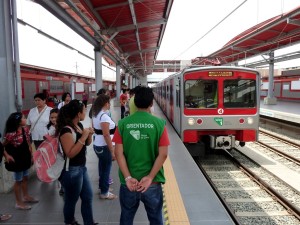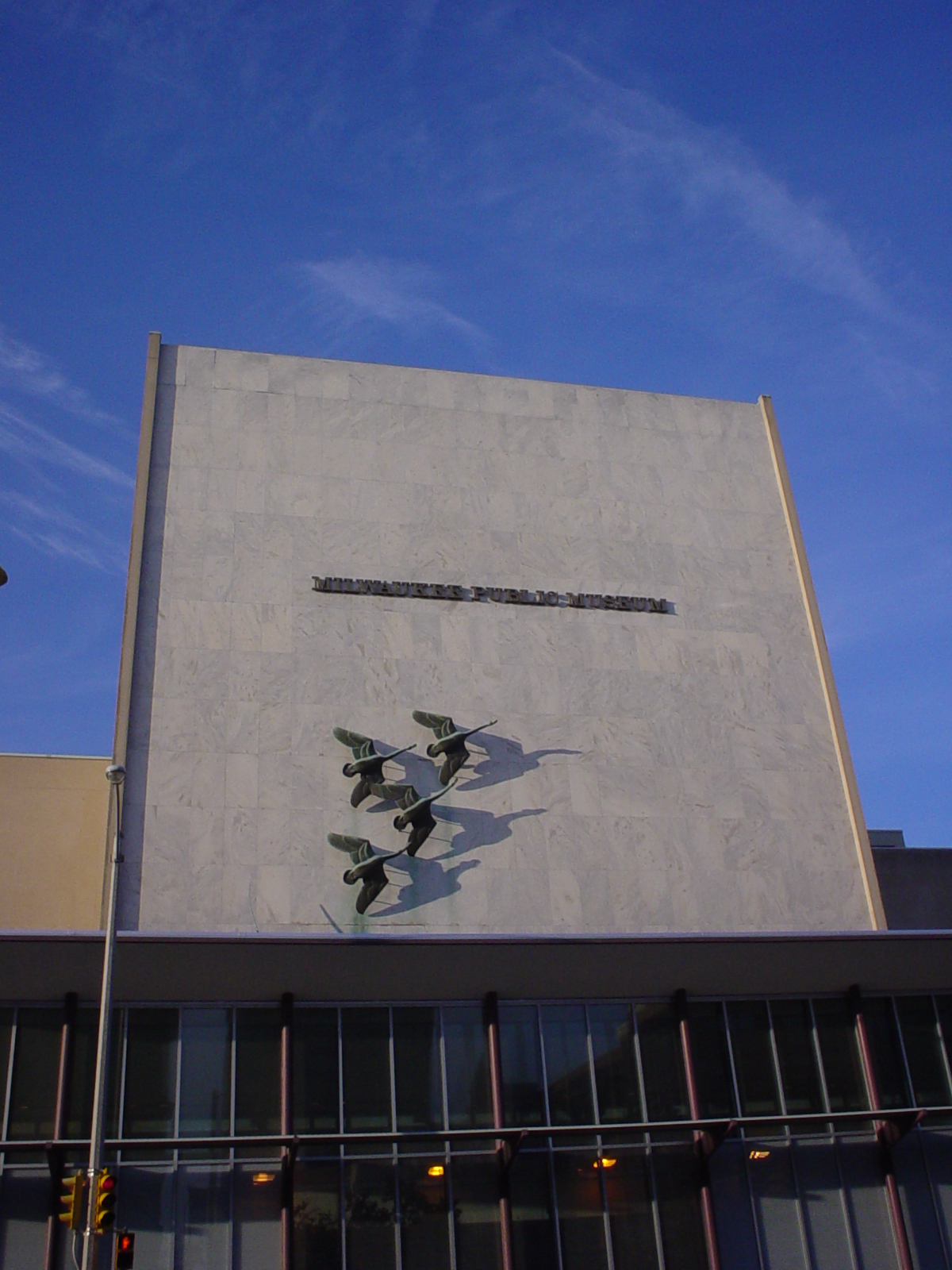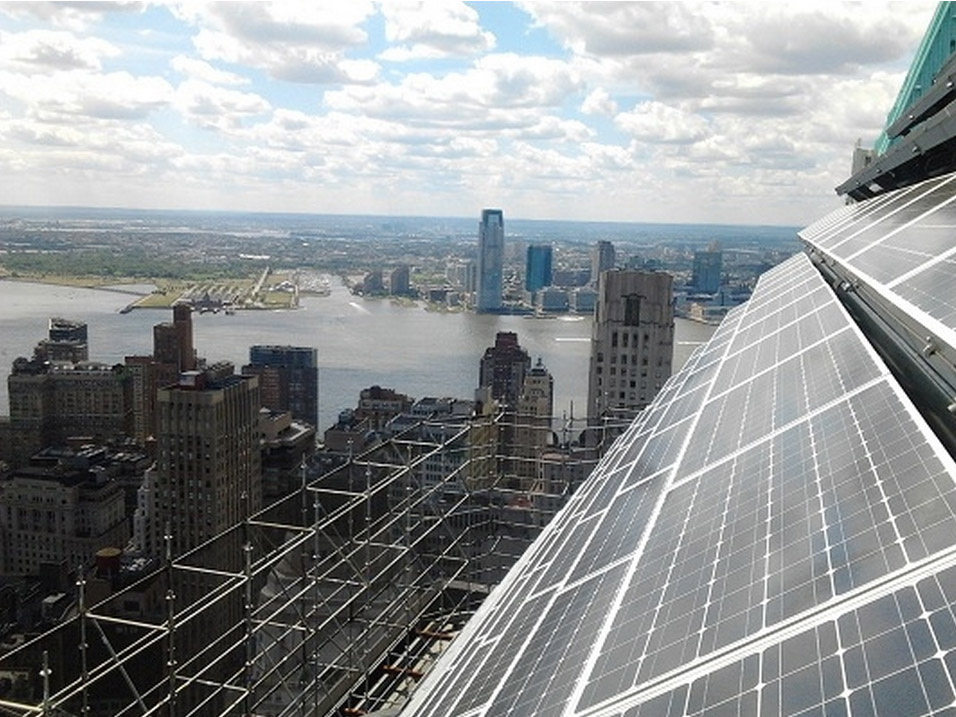Today, my colleague Norman Carlin published an interesting piece discussing a pair of recent decision issued by the Fourth District Court of Appeal upholding a public-private partnership (P3) water project against two California Environmental Quality Act (CEQA) challenges. The two decisions are Delaware Tetra Technologies, Inc. v. County of San Bernardino, 247 Cal. App. 4th 352.(2016) and Center for Biological Diversity v. County of San Bernardino, 247 Cal. App. 4th 326 (2016). Norman’s alert is Saving Private Partnerships: Court Upholds P3 Project against CEQA Challenge under Save Tara.
Articles Posted in Public-Private Partnerships (PPP)
New Law, New Opportunity: A closer look at Peru’s revised P3 framework
Historically, investors have pretty clearly found the Peruvian legal framework for procuring, awarding and  monitoring concessions to be a favorable one — just since 1996, the country has awarded more than US$20bn in Public-Private Partnership concessions. But a new legislative structure for PPP financings in Peru entered into force at the end of 2015, replacing the prior legal regime and introducing some significant changes. While some commentators have reacted negatively to the new framework, it is my view that the new law is modern, progressive, and provides a mature and comprehensive framework that should continue to attract private investment in Peru’s infrastructure. In an article for Project Finance International, New Peruvian Framework for PPPS, I examine the recently implemented legislation in depth, and arrive at the conclusion that it may prove to be a very useful model for other countries in the region and around the globe. I’m looking at you, Argentina…
monitoring concessions to be a favorable one — just since 1996, the country has awarded more than US$20bn in Public-Private Partnership concessions. But a new legislative structure for PPP financings in Peru entered into force at the end of 2015, replacing the prior legal regime and introducing some significant changes. While some commentators have reacted negatively to the new framework, it is my view that the new law is modern, progressive, and provides a mature and comprehensive framework that should continue to attract private investment in Peru’s infrastructure. In an article for Project Finance International, New Peruvian Framework for PPPS, I examine the recently implemented legislation in depth, and arrive at the conclusion that it may prove to be a very useful model for other countries in the region and around the globe. I’m looking at you, Argentina…
Photo: Jorge Gobbi, Estación Villa El Salvador, Taken Feb. 2, 2012 – Creative Commons
Water Bill to Boost Public-Private Partnerships
We have previously written regarding critical repairs and updates needed for the Nation’s aging infrastructure. We have also noted the need for private investment to get these capital-intensive infrastructure projects off the ground. An Act recently passed with strong bipartisan support by Congress and expected to be signed into law as early as this week by President Obama seeks to promote private investment in water infrastructure projects through innovative financing programs and the use of public-private partnerships (“P3s”).
The Water Resources Reform and Development Act of 2014 (“WRRDA”) (H.R. 3080) establishes a five-year pilot program – the Water Infrastructure Finance and Innovation Act (“WIFIA”) – which provides low-interest federal loans and loan guarantees for major water infrastructure projects. WIFIA authorizes the Army Corps of Engineers and the Environmental Protection Agency to provide up to $175 million in direct loans and loan guarantees for the construction of critical water infrastructure projects, including those delivered through P3s. WIFIA is modeled after the Department of Transportation’s Transportation Infrastructure Finance and Innovation Act, a successful federal program which has supported major P3 transportation projects.
In addition, WRRDA creates a separate 15-project pilot program – the Water Infrastructure Public-Private Partnership Program – to assess the use of P3s to accelerate projects in such areas as hurricane, storm, and flood damage reduction; coastal harbor improvement; and aquatic ecosystem restoration. These pilot projects authorize the Army Corps of Engineers to enter into agreements with private entities and state and local governments to help address a significant project backlog.
It is estimated that the U.S. water and sewer infrastructure will need an investment of between $600 billion and $1 trillion in the coming decades. Given the magnitude of capital needed and the critical nature of these projects, P3s seem to be an ideal structure for accomplishing the work, particularly given the current financial pressures faced by the government and its agencies. If WRRDA and its programs prove successful, it makes sense to expand such financing programs and encourage the use of P3s to fund projects addressing other sectors of the Nation’s infrastructure.
2014 Project Finance – United States
Co-head of Pillsbury’s Energy Industry team Rob James and project finance partner Philip Tendler recently published 2014 Project Finance – United States. In it, they discuss collateral, how security interests are perfected and prioritized, liens, and enforcement of collateral. In addition, they touch on bankruptcy, foreign exchange, remittances, repatriation, offshore and foreign currency accounts, foreign investment and ownership restrictions, insurance, and natural resources. They conclude with a section on financing of recent public-private partnership (PPP) transactions in the United States.
Reproduced with permission from Law Business Research Ltd. This article was first published in Getting the Deal Through – Project Finance 2014 (published in August 2013; contributing editor Phillip Fletcher, Milbank, Tweed, Hadley & McCloy LLP).
For further information, please visit Getting The Deal Through
Maryland Purple Line Update: Six Consortia Compete to Be Private Partner
We previously reported that, in August, Maryland announced plans to utilize a public-private partnership (“P3”) to build and operate its $2.2 billion light rail project known as the Purple Line, which will run between Montgomery and Prince George’s Counties. This past Tuesday marked the deadline for companies competing to be the project’s private partner to respond to a Request for Qualifications to design, build, finance, operate, and maintain the Purple Line project.
According to the Maryland Department of Transportation (“MDOT”), six groups comprised of local, national, and worldwide private companies made submissions. Those groups are: (1) M-PG Connect LLC (Plenary Group USA Ltd. and Bechtel Development Company Inc.); (2) Maryland Purple Line Partners (VINCI Concessions, Walsh Investors, InfraRed Capital Partners, ALSTOM Transport, and Keolis S.A.); (3) Maryland Transit Connectors (John Laing Investments Limited, Kiewit Development Company, and Edgemoor Infrastructure & Real Estate LLC); (4) Purple Line Development Partners (CSCEC and United Labor Life Insurance Company, Inc.); (5) Purple Line Transit Partners (Meridiam Infrastructure Purple Line, LLC, Fluor Enterprises, Inc., and Star America Fund GP LLC); and (6) Purple Plus Alliance LLC Proposer (Macquarie Capital Group and Skanska Infrastructure Development Inc.).
In January, MDOT plans to select no more than four of these groups to submit a detailed proposal for the Purple Line project by next fall. MDOT will then choose the winning proposal by early 2015. The private partner is expected to contribute between $400-900 million, and additional funding for the project will come from the federal government. If that federal funding is obtained, MDOT predicts that construction of the Purple Line will begin in the spring of 2015 with services planned to begin in 2020.
Maryland’s PPPurple Line
We have previously reported on Maryland’s efforts to modernize its public-private partnership (“P3”) law. Our own Jeff Gans has had considerable involvement with the new legislation, and, at the request of the Lt. Governor’s office, has testified before Maryland Senate and House committees considering the P3 legislation. The new law is about to be put to good use.
Last month, Maryland Governor Martin O’ Malley announced plans to utilize a P3 to build and operate a $2.2 billion public transportation project. The project is a light rail line – the “Purple Line” – which will run from Bethesda in Montgomery County to New Carrollton in Prince George’s County and tie into the existing Metrorail, MARC, and Amtrak train lines as well as bus routes.
Maryland will provide $400 million for construction of the 16-mile, 21-stop route, plus $280 million for right-of-way acquisition and finalizing design. The private partner is expected to contribute between $400-900 million, and additional funding for the project will come from the federal government.
The Maryland Department of Transportation (“MDOT”) predicts that use of a P3 will promote efficiency and reduce costs by transferring risk to the private partner. In addition, P3 proponents point to the incentives and quality-control that are created when the designer and builder of a project is also the entity responsible for the project’s ultimate operation and long-term maintenance.
The presolicitation report submitted in accordance with Maryland’s new law, which outlines MDOT’s vision for the Purple Line project, can be found at MDOT’s website. Maryland will begin the process of selecting a private partner later this year. Each prospective partner will submit a detailed bid which includes estimates for building the project, plus a 30-year estimate for operating and maintaining the Purple Line. The partner’s profits will increase if it can provide the services for under the budgeted amount, but Maryland does not bear the risk related to budget overruns.
Maryland will maintain ownership of the Purple Line, and, after 30 years, the private partner operating the line will return it to the State. At that time, Maryland has options – it can decide to operate the line on its own, or it can rebid the operating function, which could result in the same company continuing to operate the line or a transition to a new operator.
According to MDOT, construction of the Purple Line is to begin in 2015, with rail services starting in 2020. In addition to vastly improving travel between Montgomery and Prince George’s counties, the project is expected to create thousands of jobs. As a Maryland resident living along the Purple Line’s planned route, I’m looking forward to the future.
Innovative Solar Solution for Deteriorated Exterior Marble Façade
 The Milwaukee Public Museum’s 8-story tower’s marble façade facing West Wells Street is being replaced with 234 solar panels. It was reported that, over the past 50 years, the Museum’s heavy marble façade on the south wall facing West Wells Street has weathered and become less stable. Milwaukee County, which owns the building, reportedly elected to use solar panels as the replacement option because of the energy-generating potential of solar. The Museum’s solar wall is expected to generate 77,533 KW hours of electricity per year, the equivalent of having 442, 60-W light bulbs on for 8 hours every day for an entire year. For now, the Museum will be the only building in Milwaukee with a full solar wall that is generating electricity.
The Milwaukee Public Museum’s 8-story tower’s marble façade facing West Wells Street is being replaced with 234 solar panels. It was reported that, over the past 50 years, the Museum’s heavy marble façade on the south wall facing West Wells Street has weathered and become less stable. Milwaukee County, which owns the building, reportedly elected to use solar panels as the replacement option because of the energy-generating potential of solar. The Museum’s solar wall is expected to generate 77,533 KW hours of electricity per year, the equivalent of having 442, 60-W light bulbs on for 8 hours every day for an entire year. For now, the Museum will be the only building in Milwaukee with a full solar wall that is generating electricity.
It was reported that Milwaukee-based manufacturer Helios USA has been contracted to produce the Museum’s solar panels. Construction is expected to last approximately 5 months, commencing Monday, July 29. The initial phase, which will involve removal of the existing marble façade, is expected to take 4 weeks.
Photo © March 10, 2006, fitzgene – creative commons.
Lien on Your Government: The Extension of the Mechanic’s Lien Remedy to Public Construction Projects
Since the California Mechanic’s Lien Law was established more than 100 years ago, it has been black-letter law that a contractor or materials supplier has no right to assert a mechanic’s lien against public property. Thus, contractors and material suppliers (and even legal practitioners) have resigned themselves to the notion that the only available remedies on “public projects” are claims against payment bonds and the enforcement of stop notices. Within the last few years, however, the inflexible rule that “you cannot lien public property” has begun to change. In connection with the rise of construction projects arising from public-private collaboration, courts have begun to allow claimants to assert liens against private interests in publicly-owned property.
In the 2010 South Bay Expressway case, a bankruptcy court considered whether a general contractor that built a publicly-owned toll road could pursue a mechanic’s lien against a private developer’s leasehold interest in that public road. The California Department of Transportation had entered into a long-term lease with the developer, whereby the developer would construct the toll road and thereafter collect tolls and operate the public road. The court held that, as long as the lien claimant sought only to encumber and foreclose upon the developer’s leasehold interest, the lien was valid.
This recent legal development offers new hope to contractors that are not paid on “public projects.” In the wake of the South Bay Expressway decision, claimants are successfully recording and foreclosing upon mechanic’s liens on a variety of projects built on public land. For example, we’ve seen liens successfully asserted against, among other interests, a concessionaire’s leasehold interest in concession space at a public airport and a solar company’s long-term rights to operate a solar facility and sell electrical power to a municipality. In many such cases, absent the ability to enforce their lien rights, the contractors would have had no ability to enforce their rights to payment.
The bottom-line is this: a contractor should no longer assume that it has no lien rights simply because its work was completed on public property.
NY Governor Announces SUNY to Develop First-Of-Its-Kind CNSE Photovoltaic Manufacturing and Technology Development Facility
UPDATE: Natural Resources Defense Council Staff Blog, Great News: NY Governor Cuomo Pledges $1 Billion For Solar (Jan. 8, 2014)
On July 17, 2013, New York Governor Andrew M. Cuomo announced that the State University of New York’s (SUNY) College of Nanoscale Science and Engineering (CNSE) will revitalize a vacant Kodak cleanroom building in Rochester, “transforming it into a first-of-its-kind CNSE Photovoltaic Manufacturing and Technology Development Facility (CNSE MDF) for crystalline silicon photovoltaics, part of a $100 million initiative that will attract solar energy jobs and companies to the Greater Rochester Area.” This effort will also include the acquisition and relocation to the CNSE MDF of “the assets of Silicon Valley solar company SVTC as part of a $100M initiative that will create over 100 high-tech jobs and positions New York as the national leader in accelerating innovative solar technologies.”

The project is expected to set “a precedent for further investment in this green industry in New York State” and to “attract additional investments from companies around the world and accelerate our development and use of solar energy,” growing New York’s clean energy economy. It is reportedly the “first initiative as part of the project will relocate a critical component of the U.S. Department of Energy’s (DOE) SunShot initiative from California’s Silicon Valley to Upstate New York, positioning New York as the recognized national leader in accelerating the development and use of solar energy nationwide.”
Renovation of the former Kodak’s MEMS inkjet facility is underway to transform the 57,000-square-foot building at 115 Canal Landing Boulevard in the Canal Ponds Business Park. The initiative will include the fitting up of a state-of-the-art, 20,000-square-foot cleanroom. The press release confirms that a late fall opening is anticipated.
As part of the CNSE MDF project, it was reported that “over $19 million in cutting-edge tools and equipment formerly utilized by SVTC, a Silicon Valley-based solar energy company, are being relocated to the CNSE MDF and will constitute the foundation of the manufacturing development line, a result of the acquisition of SVTC’s assets by CNSE.” It further confirmed that the U.S. Department of Energy “is providing nearly $11 million in cash funding to support procurement and installation of high-tech tools and equipment, with investment from private industry partners expected to exceed $65 million to support the development and operation of the CNSE MDF.” In addition, it was reported that, “[t]o support the project, New York State will invest $4.8 million through the New York State Energy Research and Development Authority (NYSERDA).” New York’s investment is to be directed entirely to CNSE with no private company to receive any state funds as part of the initiative.
This is to be the solar industry’s first full-service collaborative facility dedicated to advancing crystalline silicon, or c-Si technologies. The CNSE MDF will provide a range of services and equipment, including complete manufacturing lines, access to individual tools, secure fab space for users’ proprietary tools, and pilot production services in an intellectual property secure environment. It is expected that the CNSE MDF will attract solar industry companies to New York to access a state-of-the-art resource that will dramatically reduce the cost, time, and risk associated with transitioning innovative solar technologies from research to commercial manufacturing of crystalline silicon photovoltaics. It is also expected to play a critical role in the national effort to develop a strong photovoltaic (PV) manufacturing industry, and serve to accelerate the introduction and use of solar energy in homes and businesses across the country. Among other things, it is expected to enable education and training to support the expansion of the highly skilled workforce required by the U.S. PV manufacturing industry.
The establishment of the CNSE MDF for c-Si PV technology is also expected to complement and expand the capabilities and expertise of the national U.S. Photovoltaic Manufacturing Consortium (PVMC), headquartered at CNSE as part of the DOE’s SunShot Initiative. The PVMC is reportedly leading the national effort to reduce the cost of installed solar energy systems from $5 per watt to less than $1 per watt over the next 10 years.
Governor Cuomo’s announcement comes on the heels of his July 9, 2013 announcement that $54 Million will be awarded to fund 79 large-scale solar power projects across the State of New York, adding 64 MWs to the state’s solar capacity.
Photo © July 1, 2011, Deutsche Bank, All Rights Reserved, Creative Commons.
CPUC Reports California’s Solar Success
UPDATE: Sacramento Business Journal, California hits solar power record, twice (Mar. 11, 2014); The Huffington Post, California More Than Doubles Solar Energy In 2013 (Jan. 13, 2014): “California installed more megawatts of solar energy in 2013 than it did in the last 30 years combined, the California Solar Energy Industries Association reported … ‘Today, California is closing out the year with more than 2,000 MW of rooftop solar systems installed statewide,’ CALSEIA executive director Bernadette Del Chiaro said.”
On July 10, the California Public Utilities Commission (CPUC) issued its California Solar Initiative Annual Program Assessment on the progress of the California Solar Initiative (CSI). The Assessment reflects that the program has installed 66% of its total goal with another 19% reserved in pending projects. This is an estimated 1,629 MW of installed solar capacity at 167,878 customer sites in the investor-owned utility territories through the end of the first quarter of 2013. The CPUC estimates that this is enough to power approximately 150,000 homes and avoid building three power plants. To read the Assessment, click California Solar Initiative Annual Program Assessment.

In January 2007, California began an $3.3 billion ratepayer-funded effort to install 3,000 MW of new solar over the next decade and transform the market for solar energy by reducing the cost of solar generating equipment. The CPUC’s portion of the solar effort is known as the CSI. The CPUC boasts that is the country’s largest solar program and has a $2.2 billion budget and a goal of 1,940 MW of solar capacity by the end of 2016.
CPUC’s Assessment includes the following highlights:
- A record 391 MW were installed statewide in 2012, a growth of 26% from 2011.
- Pacific Gas and Electric Company achieved the most installations in the non-residential sector of any investor-owned utility, having met 70% of their non-residential installation goal.
- Applicants to the low income portion of CSI, known as the “Single-Family Affordable Solar Homes” program, have received $64 million in support for their residential solar systems while the “Multifamily Affordable Solar Housing” (MASH) program has completed 287 projects representing a total capacity of 18.4 MW. There are an additional 83 MASH projects in process, for a total capacity of 11.3 MW. “Virtual Net Metering” has facilitated thousands of tenants receiving the direct benefits of solar as reductions in their monthly electric bills.
- In just over 3 years of operation, the CSI-Thermal program has received 1,215 applications for $56.3 million in incentives.
- All but 92 MW, or 6%, of solar capacity in the state is signed up for Net Energy Metering (NEM) tariffs. Pursuant to California Assembly Bill 2514 and CPUC Decision 12-05-036, the CPUC has initiated a study on the costs and benefits of NEM to ratepayers. The study is expected to be released later this year.
Additional Resources: Solar Industry, California More Than Doubles Solar Power Market In 2013 (Dec. 31, 2013)
 Gravel2Gavel Construction & Real Estate Law Blog
Gravel2Gavel Construction & Real Estate Law Blog


